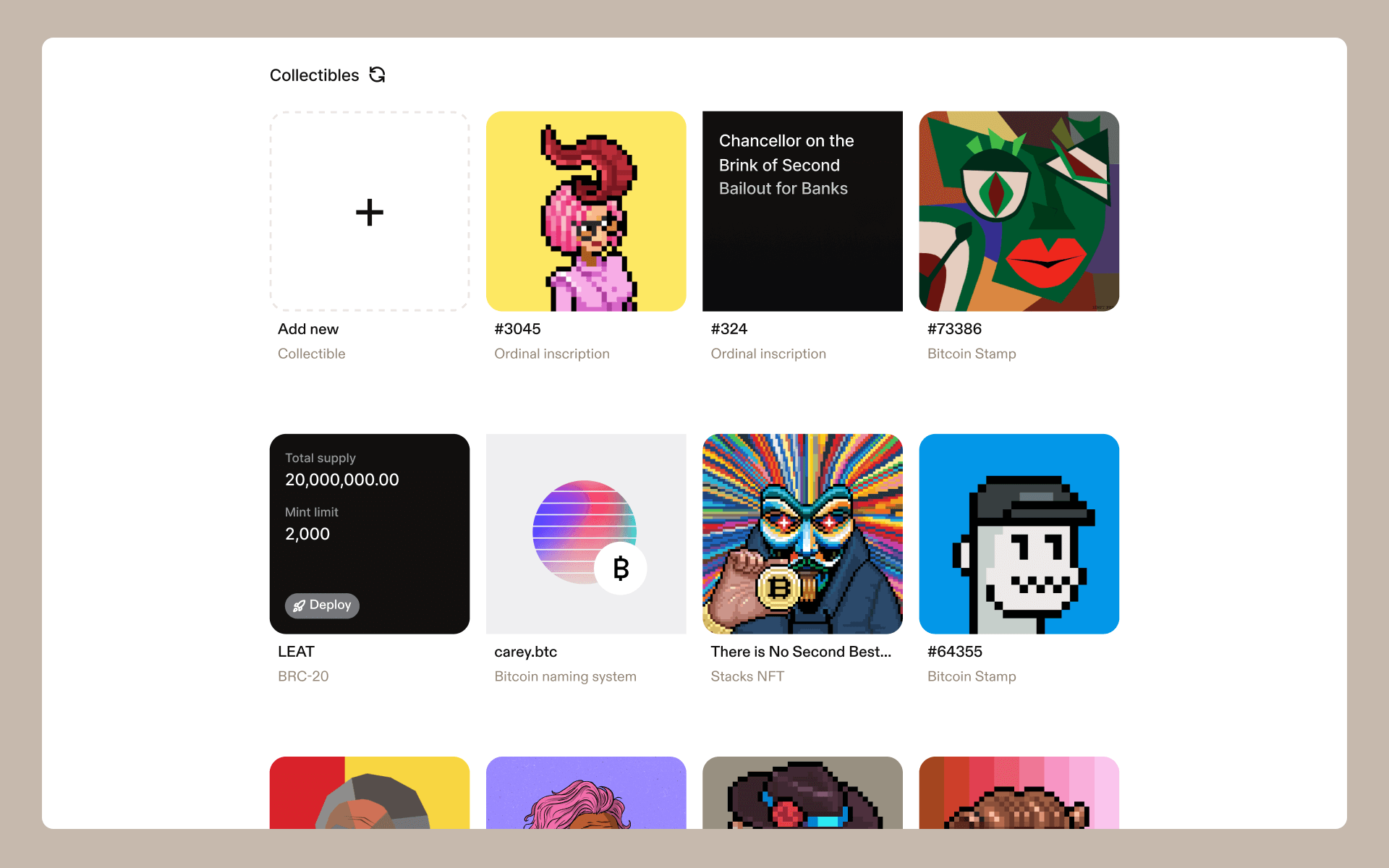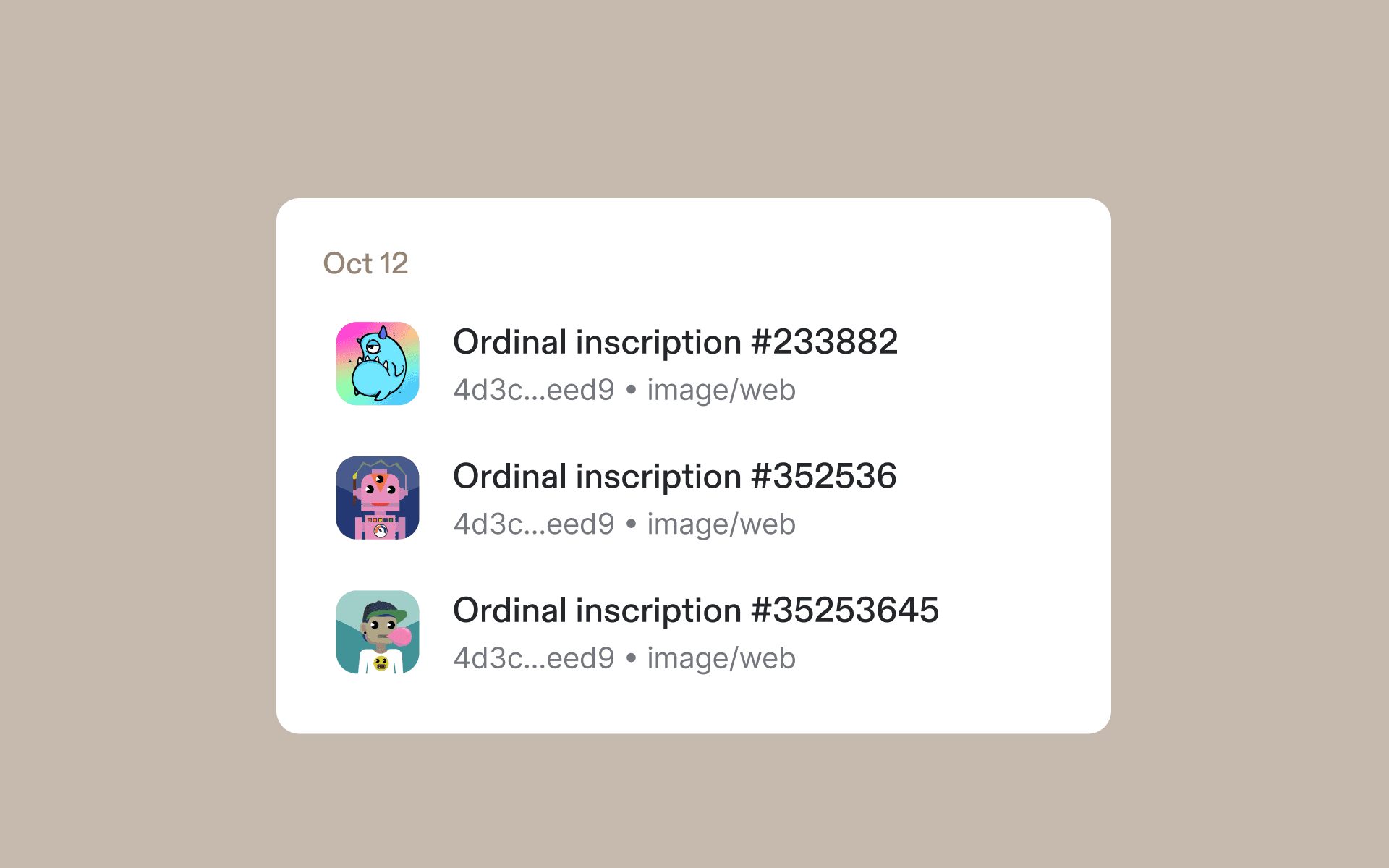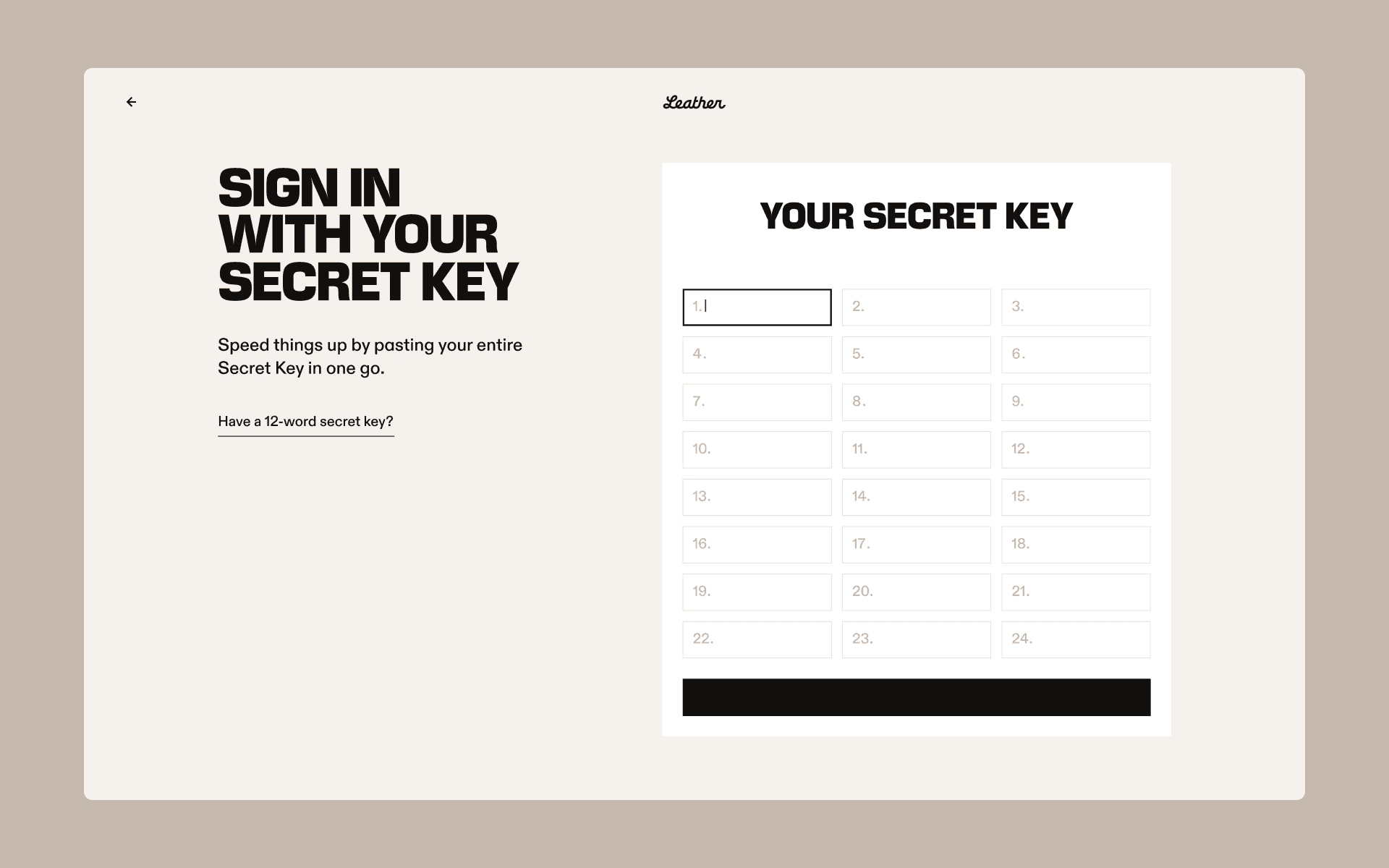Back
Oct 15, 2023
•
General Wallet Use
•
6 min
Security reminder: While we’re excited about the update, we do strongly encourage our users to continue depositing Ordinals into Taproot addresses for an added layer of security. Users can do so by clicking the “Add new” option under the “Collectibles” section.
A Bitcoin address type shouldn’t hinder your Bitcoin wallet experience.
We recently went live with Native SegWit inscription support to make sure that our users don’t have to worry about what wallet type they’re using to send, receive and manage their Ordinals.
This update, along with our continued support for Taproot addresses, is designed to make managing your Ordinals collection more flexible and user-friendly than ever before.
How This Update Helps Bitcoin Ordinal Users on Leather
The implementation of Native SegWit inscription support means that Leather users can now:
Effortlessly view and send inscriptions that have been deposited to their Native SegWit addresses. This gives users a smoother experience when managing their Ordinals portfolio.
Get a holistic view of their Ordinals-related activity per account, regardless of whether they’ve sent or received Ordinals inscriptions using their Native SegWit or Taproot addresses. Our goal is to make sure that each user has all of their activity information at their fingertips to keep track of their Ordinal transactions.
Import keys from other wallets that use Native SegWit for storing Ordinals and instantly view their inscriptions. This streamlines the process of consolidating users’ Ordinals assets.



Understanding Bitcoin Ordinals: Taproot vs. Native SegWit Addresses
It’s not uncommon for today’s Bitcoin wallet user to be exposed to different Bitcoin address formats. Given the update, it’s important to be familiar with two of them for Ordinals-related transactions in Leather: Native SegWit and Taproot addresses.
Native SegWit addresses
SegWit addresses come in two main formats: Pay-to-Witness-Script-Hash (P2WSH), which starts with a “3,” and Pay-to-Witness-Public-Key-Hash (P2WPKH), which starts with “bc1q”. P2WSH is normally used when you need more advanced scripting capabilities, such as with multi-sig wallets. P2WPKH is more commonly used for regular single-signature transactions.
Native SegWit addresses are P2WPKH, which means that they start with “bc1q” and are also backwards compatible with legacy Bitcoin addresses. Like SegWit addresses, they prioritize the separation of witness data from transaction data (like the initial SegWit upgrade). However, Bech32 is more efficient with block space because it allows for shorter and more concise representations of addresses (the public key hash is 20 bytes as opposed to 32 bytes). This results in smaller transaction sizes and, as a result, lower transaction fees for users.
Taproot addresses
Taproot addresses have a “bc1p” prefix and are compatible with SegWit (and Native SegWit) addresses. This address format is known as pay-to-Taproot (P2TR) and is a modified version of Bech32 known as Bech32m. Bech32m addresses are actually almost identical to Bech32 addresses,
Taproot addresses allow for more efficient transactions with lower fees and enhanced privacy measures. This is because the P2TR address format consolidates complex smart contracts into a Schnorr signature, which can combine multiple signatures into one.
Building for Bitcoin Addresses of All Kinds
Leather users should be able to access the Bitcoin ecosystem in its entirety, regardless of Bitcoin address format. Be it legacy, SegWit or Taproot, a Bitcoin address should feel like it empowers you to explore more of the Bitcoin blockchain with your Bitcoin wallet.
This latest Leather update is just one step in our goal to expand support for different Bitcoin address types down the road. Our team is currently exploring a number of features – like the ability to manage and generate new wallet addresses – that could be part of Leather’s repertoire of Bitcoin user-focused capabilities down the road.
As we’ve said before, a Bitcoin address type shouldn’t hinder your Bitcoin experience. It should act as another door into Bitcoin Web3.
Connect to web3 applications built on Bitcoin with the Leather browser extension. Install Leather – the only wallet you need to tap into the multilayered Bitcoin economy – today.
